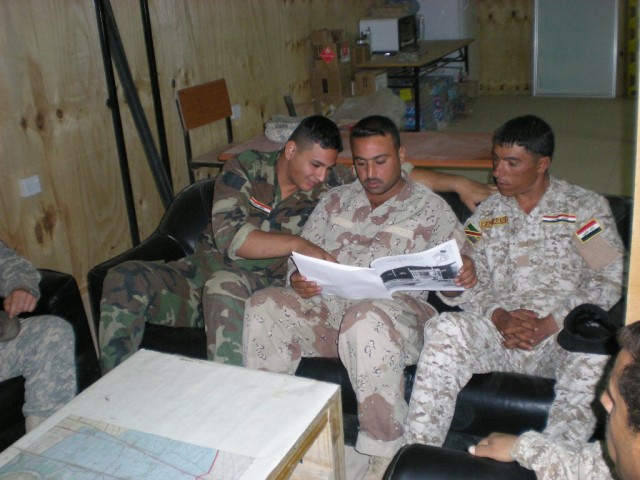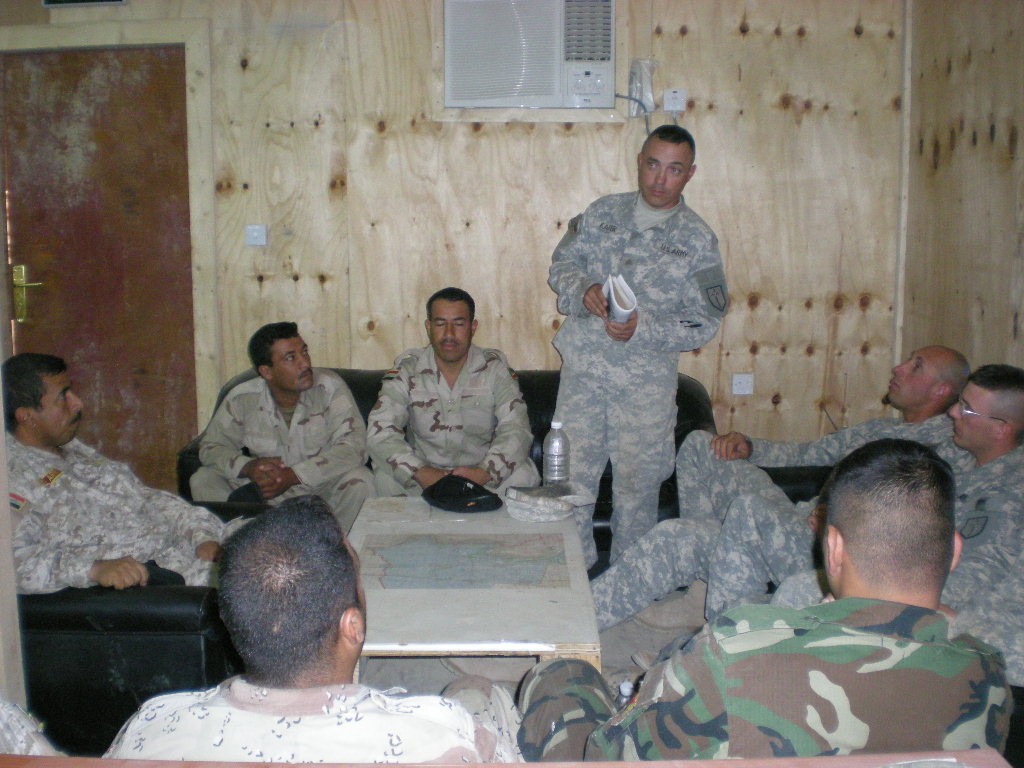BAGHDAD - Engineer Soldiers in the United States Army are known for their wide range of combat and construction knowledge. Engineer Soldiers of the Iraqi Army (IA) are beginning to have the same reputation as they joined forces with Soldiers of 1st Platoon, Company A, 46th Engineer Combat Battalion (Heavy) to receive training in wood framing and interior electrical wiring at Joint Security Station (JSS) Tarmiyah.
During the on-going joint training the engineers will construct five Army B-Huts and safety platforms in five guard towers.
One IA Soldier, Amar Kharay Hammeid, spoke about the training through an interpreter. "We are excited to get this training," stated Hammeid. "The focus is really about us getting the skills we need so we can do this work ourselves."
First, training began with a classroom portion where the IA engineer Soldiers were introduced to construction safety, wood framing fundamentals, and electrical wiring principles. Each Soldier received a training manual, translated into Arabic, outlining each step required to build troop housing to Coalition standards.
Spc. Joshua Smith, from Sacramento, Calif., 46th ECB (H), team leader in charge of the electrical portion of the project pointed out that it was a good thing to have the classroom instruction, but the hands-on portion is most important.
"I know that on the ground experience is the most important thing, but I'm glad the Iraqi engineers are walking away from this training with a manual," stated Smith. "They'll be able to use it later to pass their training on to other Iraqis."
Another accommodation to the training were the two interpreters, on hand each step of the way.
"It's my job to make sure that there are no misunderstandings so that the training can go smoothly," stated an Iraqi interpreter called "John," and thanks to his help, smoothly is exactly how the training went.
On occasion, building framers in the United States have been heard to say, 'We're not building a piano here,' when someone questions the quality of their work, however three of the Iraqi engineers on the job were already capable of just that kind of precision in woodworking before receiving the training.
"We used to be furniture makers," stated Kamel Ismaeal Ajeal, 6th Iraqi Army Engineer Regiment.
The Iraqis brought their woodworking skills to the table for the training mission, which increased the quality of the B-Huts and platforms; and their attention to detail attained while building chairs and tables, translated well into building the large wood frame structures.
Sgt. Heith Kafer, the joint training non-commissioned officer in charge, carpentry/masonry specialist, and a native of Medford, Ore. explained how the construction of the new B-Huts would create additional housing for Coalition forces moving to the site located north of the city, as well as help the local citizens living outside the JSS.
Before the new structures were added, IA Soldiers and Coalition forces resided on separate parts of the base, now they will join together and combine their strength, there will be additional security added, and then a major highway near the JSS will re-open. The heavily traveled route through the city will also once again be utilized by the local citizens as there will be more overwatch of the route.
With the five new structures and safety tower platforms will improve the quality of life for Iraqi and Coalition forces living on the Joint Security Station. The most enduring and important legacies of the mission are the newly trained Iraqi Army engineers who will share their new skills with their fellow comrades.




Social Sharing